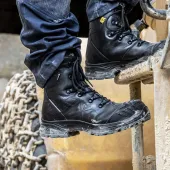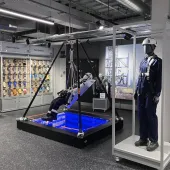Listening to the millennial generation

Digital technology that meets the needs of the younger generation is key to combating occupational hearing loss
ACCORDING to Kjersti Rutlin, global technical training specialist for hearing conservation with Honeywell Industrial Safety, the tragedy of noise-induced hearing loss (NIHL) is that, despite being entirely preventable in most cases, it remains the most commonly reported occupational disease in Europe.
Moreover, NIHL is expected to become even more widespread in decades to come, with 1.1 billion young people at risk globally, which is why raising awareness of this occupational disease – especially amongst the younger generation of workers – has never been so important.
‘Lack of awareness is indeed one of the main reasons why occupational NIHL remains so widespread and is, in large part, a result of gaps in legislation combined with inadequate training practices,’ explained Ms Rutlin.
‘The fact that fit-testing is yet to become mandatory [in Europe] is remarkable, especially considering that it only requires a very simple one-to-one training procedure to check if a worker is wearing hearing protection correctly. The lack of mandatory compliance, however, means that fit-testing has not been widely adopted by employers.’
According to Ms Rutlin, making fit testing compulsory would go a long way towards tackling conditions such as tinnitus, which can quite often be the result of poorly fitting personal protective equipment. ‘A regulatory requirement would ensure employers made this training practice an integral part of their hearing conservation strategy,’ she said.
‘It is also crucial to help workers maintain their awareness of NIHL through refresher training sessions,’ she added. ‘Tools such as audio files and videos that demonstrate the symptoms of conditions such as tinnitus and their life-changing consequences can complement fit testing. This type of training can appeal to millennials who have grown up in the era of YouTube and, over time, help them maintain and enhance their knowledge of preventing NIHL.’
Future technological developments will also provide new opportunities to raise awareness of hearing conservation among younger workers. One key trend in this respect is enhancing communication while preserving hearing in the long term.
Increasingly, devices such as earmuffs are becoming communication hubs that connect to smartphones via Bluetooth, allowing workers to answer phone calls, hear alarms or receive vital instructions without putting their hearing at risk.
Additionally, the integration of miniaturized microphones to register residual noise, combined with software and cloud technology, is enabling a new, app-based approach to hearing conservation, with the ability to monitor sound exposure in real time.
‘Offering younger workers the same level of interactivity and ease-of-use of the technology they are accustomed to in the consumer space could encourage the uptake and correct use of hearing protection,’ said Ms Rutlin.
‘By equipping itself with the kind of technology that meets the expectations of this generation of digital-natives, the safety industry will put itself in the best position to protect their hearing in the long term.’









